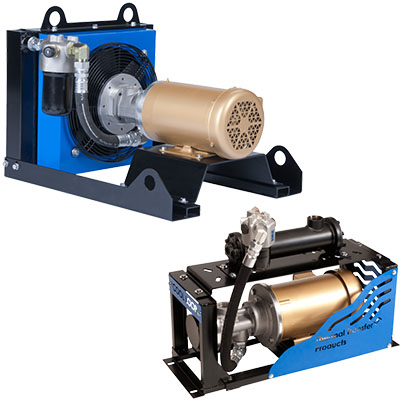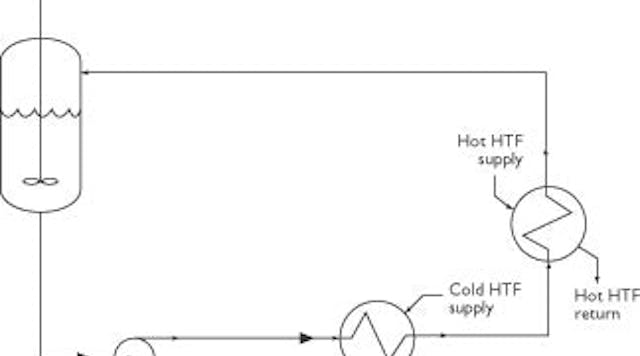A Comprehensive Guide to Choosing the Right Heat Transfer Solutions for Your Requirements
Picking the ideal Heat transfer system is crucial for functional efficiency. Numerous systems satisfy different demands, affected by elements such as temperature array and fluid kind. Recognizing the principles behind Heat transfer, such as conduction, radiation, and convection, is important. Additionally, examining power resources and maintenance techniques can influence long-term performance. A closer evaluation of these factors to consider discloses exactly how to tailor a system to details needs. What should one prioritize in this complex decision-making procedure?
Comprehending Heat Transfer: Key Ideas and Principles
Heat transfer may seem like a straightforward concept, it includes an array of principles that are fundamental for effective system design - DVS Heat Transfer Systems. Understanding these principles is crucial for developers and designers that intend to maximize thermal performance in various applications. Conduction, for example, involves the transfer of Heat via strong products, while convection describes the movement of Heat within fluids. Radiation, another crucial principle, defines just how Heat can be transferred with electro-magnetic waves. Each of these systems plays a crucial duty in identifying just how power moves within a system. By completely understanding these concepts, specialists can make enlightened decisions, ensuring that Heat transfer systems run efficiently and satisfy the details demands of their applications
Kinds Of Heat Transfer Systems: An Introduction
Understanding the concepts of Heat transfer lays the foundation for discovering the numerous kinds of Heat transfer systems available. Heat transfer systems can be classified mainly into 3 kinds: conduction, radiation, and convection. Conduction entails Heat transfer with solid products, counting on direct get in touch with between bits. Convection, on the other hand, takes place in liquids (liquids and gases) where the motion of the fluid itself promotes Heat transfer. Radiation involves the transfer of Heat via electro-magnetic waves and does not need a tool, permitting it to take place in a vacuum cleaner. Each sort of system has distinct qualities and applications, making it important for people and organizations to meticulously assess their details needs when selecting the most ideal Heat transfer remedy.
Applications of Heat Transfer Systems in Different Industries
Heat transfer systems play a necessary function throughout different markets, affecting efficiency and item top quality. In industrial production procedures, they help with exact temperature level control, while in food and drink handling, they assure safety and preservation. Additionally, HVAC and climate control systems depend greatly on reliable Heat transfer to preserve comfortable atmospheres.
Industrial Production Processes

Various commercial production procedures count greatly on reliable Heat transfer systems to make the most of efficiency and enhance item quality. In industries such as metalworking, Heat exchangers play an essential role in preserving ideal temperature levels throughout welding, spreading, and creating. These systems guarantee uniform Heat distribution, which is vital for achieving desired material buildings. In a similar way, in the chemical production sector, Heat transfer systems facilitate specific temperature control during responses, influencing return and security. In textile production, efficient Heat monitoring is crucial for coloring and completing processes, affecting shade consistency and fabric quality. By picking proper Heat transfer modern technologies, producers can boost energy effectiveness and minimize operational costs, inevitably resulting in an extra affordable and sustainable manufacturing setting.
Food and Beverage Processing
Effective Heat transfer systems are equally important in the food and drink processing industry, where keeping excellent temperatures is crucial for food safety and quality. These systems play an essential function in processes such as sterilization, pasteurization, and cooking, guaranteeing that products are safe for usage and retain their nutritional value. Heat exchangers, for example, successfully move Heat in between fluids, enhancing power usage while lessening temperature level fluctuations. Additionally, refrigeration systems are essential for extending and protecting subject to spoiling items service life. The selection of Heat transfer modern technology directly affects operational effectiveness and item integrity, making it imperative for food and drink producers to choose the ideal systems tailored to their particular handling demands. This careful choice eventually adds to consumer fulfillment and food safety and security.

A/c and Climate Control
While several industries rely upon Heat transfer systems for efficiency, A/C (Home Heating, Ventilation, and A/c) plays a vital function in preserving indoor environment control across various setups. These systems make use of Heat transfer concepts to manage temperature, humidity, and air top quality, guaranteeing convenience and safety in residential, industrial, and commercial environments. Properly developed HVAC systems improve power performance, reduce operational prices, and minimize environmental effect. In industrial structures, for instance, efficient environment control adds to staff member efficiency and customer contentment. In industrial applications, heating and cooling systems assist preserve excellent conditions for devices operation and product preservation. Choosing the appropriate Heat transfer system is essential for conference certain environment control demands and accomplishing general system performance.
Evaluating Power Resources for Heat Transfer Systems
In evaluating power resources for Heat transfer systems, a contrast of sustainable power options and nonrenewable fuel source considerations is crucial. Renewable sources, such as solar and wind, offer sustainable options that can minimize environmental impact. Conversely, nonrenewable fuel sources check out this site stay widespread due to their recognized facilities and power density, prompting a mindful analysis of both choices.
Renewable Resource Options

Fossil Fuel Considerations
Reviewing fossil fuel factors to consider is important for the performance and sustainability of Heat transfer systems. Fossil gas, such as gas, oil, and coal, are conventional energy resources that give considerable Heat outcome, making them preferred choices for household and industrial applications. Nevertheless, their environmental influence, consisting of greenhouse gas discharges and source exhaustion, raises problems. When picking a warm transfer system, it is crucial to analyze the accessibility, price, and regulatory factors connected with these fuels. Furthermore, the effectiveness of fossil gas systems have to be taken into consideration, as greater efficiency can minimize some environmental disadvantages. Ultimately, a well balanced strategy evaluating performance and sustainability can lead decision-makers towards the most suitable Heat transfer solution for their certain needs.
Aspects to Take Into Consideration When Choosing a Warmth Transfer System
Selecting an appropriate Heat transfer system requires careful factor to consider of different elements that can considerably affect effectiveness and performance. One crucial factor is the operating temperature range, which dictates the products and layout ideal for the application. Additionally, the kind of fluid made use of in the system-- whether gas or liquid-- affects Heat transfer efficiency and compatibility. The system's dimension and capacity must align with the specific demands of the procedure to stay clear of ineffectiveness. Power resource schedule is additionally essential, affecting operating prices and sustainability. Moreover, the installation environment, including area restraints and accessibility for maintenance, plays a significant function in system option. Regulatory compliance and safety criteria should be considered to ensure the system fulfills all lawful requirements.
Upkeep and Efficiency Optimization for Heat Transfer Systems
Maintaining Heat transfer systems is necessary for making sure optimal effectiveness and durability. Regular upkeep activities, such as cleaning up Heat exchangers and examining insulation, help stop efficiency losses because of fouling and thermal linking. Additionally, checking system parameters, consisting of stress and temperature, enables early discovery of anomalies, minimizing downtime and pricey repair work. Executing a preventative maintenance routine can maximize efficiency and expand the life expectancy of parts. Updating to sophisticated control systems can boost operational performance by readjusting to varying lots and conditions. By prioritizing upkeep and efficiency optimization, drivers can accomplish minimized energy consumption, lower functional expenses, and boosted overall system dependability, inevitably causing far better source use and a more sustainable operation.
Future Fads in Heat Transfer Technologies
As industries increasingly prioritize sustainability and power effectiveness, future patterns in Heat transfer technologies are readied to undergo significant transformations. Advancements such as innovative materials, including carbon nanotubes and nanofluids, promise improved thermal conductivity and efficiency. Additionally, the assimilation of renewable resource sources into Heat transfer systems is acquiring momentum, advertising environmentally friendly remedies. Smart modern technologies, consisting of IoT sensors, are expected to revolutionize surveillance and control, allowing real-time data analysis for enhanced performance. In addition, the advancement of compact and modular systems will facilitate less complicated installment helpful site and upkeep, dealing with varied applications. These advancements indicate a shift towards even more lasting, effective, and adaptable Heat transfer services, aligning with global power goals and ecological requirements.
Frequently Asked Concerns
What Are the Ecological Effects of Heat Transfer Equipments?
The ecological influences of Heat transfer systems can consist of greenhouse gas discharges, energy usage, and prospective thermal pollution. In addition, incorrect disposal of materials and inefficiencies can add to resource deficiency and ecosystem disturbance.
Exactly how Do I Determine the Cost-Effectiveness of a Warmth Transfer System?
To calculate the cost-effectiveness of a heat transfer system, one need to evaluate initial expenses, functional costs, maintenance requirements, and power performance, comparing these elements against the anticipated life-span and performance of the system.
Can Heat Transfer Equipment Be Made Use Of in Residential Setups?
Heat transfer systems can undoubtedly be used in household settings. They provide reliable heating and cooling down services, making homes extra comfortable while possibly lowering power costs. Their convenience enables for numerous applications in residential settings.
What Safety Regulations Put On Heat Transfer Equipments?
Safety policies for Heat transfer systems usually include guidelines on installment, maintenance, and procedure. Compliance with neighborhood building codes, supplier requirements, and sector requirements is important to ensure effective and safe system efficiency in various applications.
Exactly How Do Various Materials Affect Heat Transfer Performance?

Transmission, for circumstances, entails the transfer of Heat with strong materials, while convection refers to the activity of Heat within liquids. Comprehending the concepts of Heat transfer lays the groundwork for exploring the numerous types of Heat transfer systems offered. Heat exchangers, for instance, effectively transfer Heat between fluids, enhancing power usage while minimizing temperature variations. In reviewing energy resources for Heat transfer systems, a comparison of sustainable power options and fossil fuel factors to consider is crucial. Metals, such as copper over here and light weight aluminum, conduct Heat effectively, whereas insulators like rubber and glass slow down Heat flow.